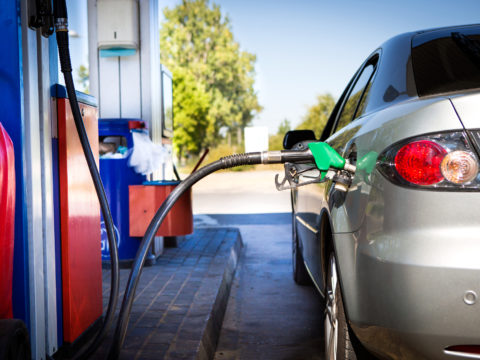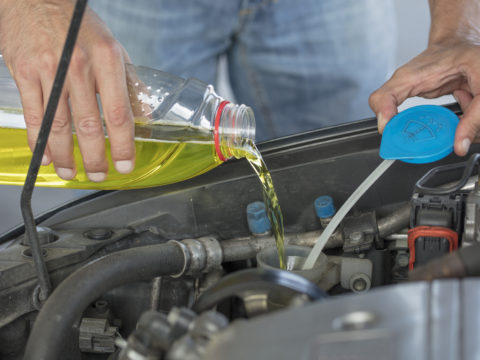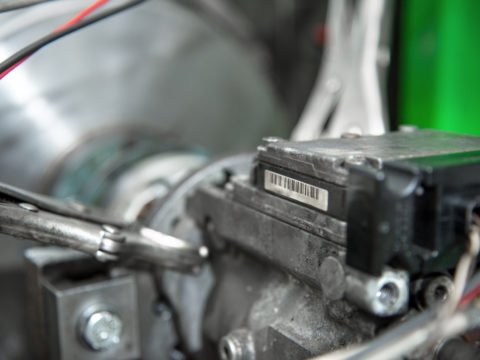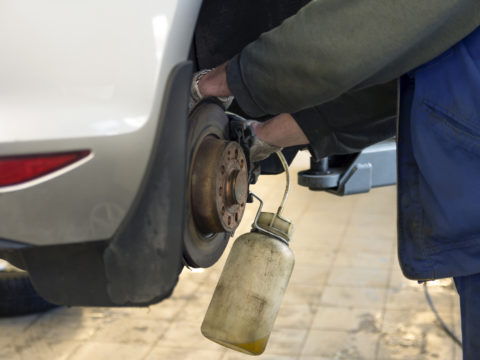Even though a vehicle needs fuel to run, you cannot ignore the importance of a car coolant. You will require this antifreeze liquid because your engine is bound to heat up after driving for a while.
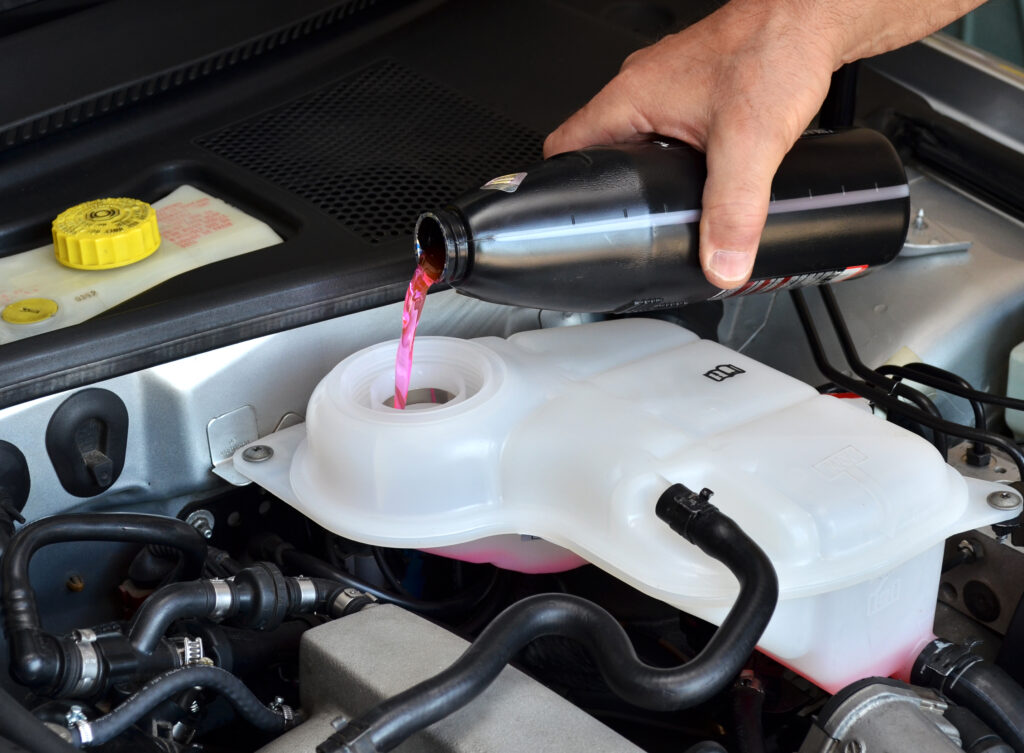
If you have ever experienced coolant loss, you may wonder how much coolant loss is normal. A well-maintained car still loses two to three ounces of coolant every year.
Keep reading to learn more about this issue and dispel all myths and misconceptions you may have.
Contents
What Is Coolant in a Car?
A car coolant or antifreeze is a liquid that reduces the engine’s temperature when overheating. Besides regulating the engine’s temperature, this liquid aids in preventing engine corrosion.
All coolants contain ethylene glycol, which is the base chemical, even though some are different from others. This chemical is mixed with water on a 50:50 ratio, but some companies add dyes and other chemical additives to differentiate their coolant from the rest.
Check your coolant levels, especially during the summer when it’s hot, and consult a mechanic if it leaks.
Coolant Leak Symptoms
There are several ways you can know if your coolant is leaking. Let’s discuss them in detail.
Overheating Engine
Your car is overheating if you get a temperature warning light. However, if you keep on getting it even after adding a coolant, it implies that your coolant may be leaking.
The primary aim of adding a coolant to the engine is to minimize its temperature. Thus, if it leaks, you will notice that your car is overheating quickly, even when driving it for short distances.
The Coolant Levels in the Expansion Tank are Low
Each car has an expansion tank, which stores the coolant. If the engine’s coolant decreases, the vehicle refills itself from the expansion tank. It implies that if your car is overheating, it may have used all the coolant in the engine and the expansion tank.
Thus, if your car’s expansion tank is usually empty, especially after refilling it a few days ago, it implies that your coolant may be leaking. Visit an auto service center immediately to solve the situation because driving a car with a coolant leak may lead to engine failure.
Noticing a Pool of Coolant
Your car’s coolant may leak if you notice a pool of coolant under the car, especially after parking it for a long time.
You can also determine the leakage flow. For instance, if you notice a huge puddle of coolant after a few days, it implies that your coolant is leaking at a higher rate, which is concerning.
You will not have a hard time noticing the puddle of coolant since most antifreeze liquids have vibrant colors, such as red, blue, and pink. So it will be easy to differentiate the coolant leak from other car liquids.
Seeing Bubbles in the Radiator
In every car, the radiator pipe and the coolant expansion tank are usually tightly sealed to prevent air from getting in. However, if your coolant leaks, the combustion air from the engine will take up this space.
Thus, you may realize bubbles in the radiator or expansion tank, which is a symptom of a coolant leak, especially if you have recently added the coolant. Take your car to a mechanic promptly to ensure they inspect your car thoroughly to find the source of the leak.
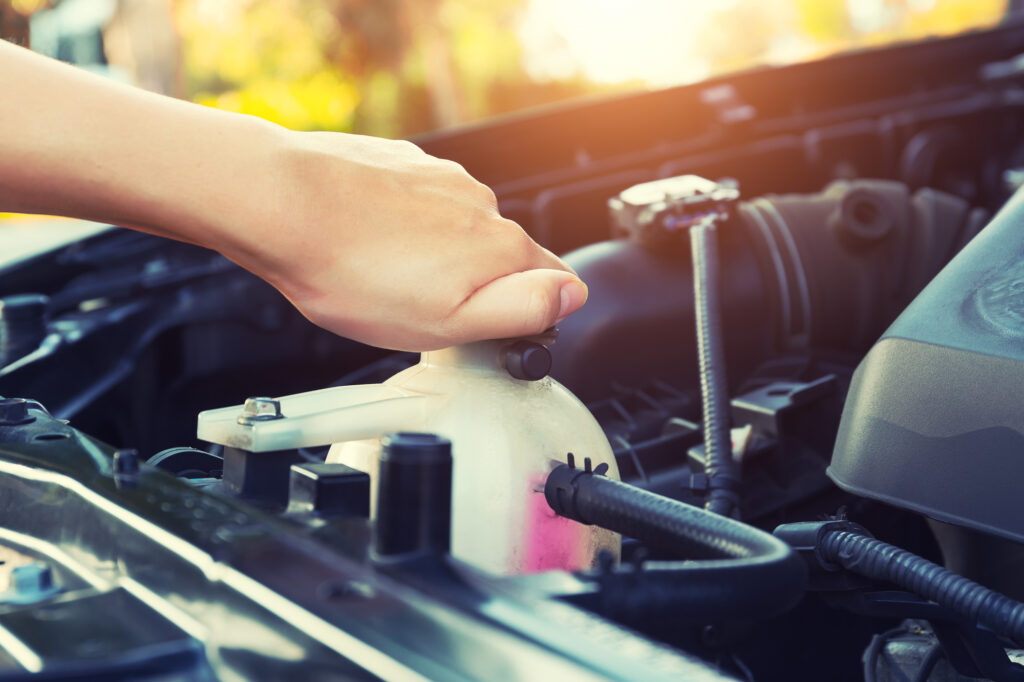
Is It Normal for Coolant Level to Drop?
Yes, it is normal for the coolant level to drop, but it should be minimal. Many factors increase your engine’s temperature, such as internal combustion, the constant movement of various mechanical parts, and current generation.
So, the antifreeze liquid regulates the heat produced during these processes to prevent your engine from overheating. This may cause the water in your antifreeze liquid to evaporate, which decreases the car’s coolant level.
If this occurs, you only need to add the coolant to its desired level.
How Much Coolant Loss is Normal?
If your engine is functioning correctly, you should expect an antifreeze loss of two to three ounces annually. This means that it is standard for your coolant to decrease every four months.
However, take your car to a mechanic if you notice a drop in the first month after refilling the coolant.
Coolant Leak Causes
There are several causes of a coolant leak. Let’s discuss them in detail.
A Worn-Out Head Gasket
Every car has a head gasket, which plays an integral role in shutting the engine’s combustion chamber to ensure the car produces sufficient pressure to maintain the engine power.
The head gasket and coolant are linked, which means they must work together. So, if your head gasket is damaged, the car’s coolant will leak.
In the same way, if you drive a car with low coolant, it will damage the head gasket.
The head gasket also prevents the coolant from leaking and damaging the engine. One way to know that your head gasket is worn out is if you notice white fumes from the engine.
A Faulty Cooling System
Every vehicle has a cooling system that aids in regulating the engine temperature. If this cooling system is damaged, it can lead to a leak.
Each car has a water pump, which aids in pumping the antifreeze liquid to the radiator and other parts of the engine. If the water pump cannot push the coolant to these parts, it can cause various problems that lead to coolant leakage.
The radiator fan is also part of the car’s cooling system, which is located close to the radiator. However, if this fan is faulty, the increase in temperature and pressure may open the radiator cap, causing the coolant to leak.
A Damaged Radiator
Car radiators are made from aluminum because they are strong and less likely to crack when the engine temperature increases.
However, these radiators are still prone to damage and may wear out if you regularly drive your car for long distances without adding coolant. The radiator will also corrode over time if you use water instead of a coolant to reduce the engine temperature.
After a while, your radiator will have holes due to corrosion, causing coolant leakage.
Damaged Radiator Hoses
The primary function of a radiator hose is to transport the coolant from the radiator to the engine. They are closely located in the engine and are constantly exposed to high temperatures.
However, the radiator hoses may wear out after a while, causing the coolant to leak.
A Rusty Radiator Cap
The primary role of a radiator cap is to maintain the reservoir pressure and ensure the coolant is at the right level. However, if this cap is damaged or rusty, it can cause coolant leakage. One should change their radiator cap after several years to avoid such issues.
How to Fix a Coolant Leak
Here are some of the ways you can fix a coolant leak.
- Install new radiator hoses. Buy new radiator hoses after several years and ensure they are compatible with your car’s model.
- Change the radiator cap. If your radiator cap is rusty or damaged, you should change it to avoid further leakage.
- Repair the radiator. Take your car to a mechanic and ask them to seal the holes in the radiator to avoid leakage.
- Replace the water pump. Since it can be difficult to replace the water pump, you should do this when changing the timing belt.
One pro tip is that most of these repair measures require mechanical knowledge, so you should avoid implementing DIY solutions since you may damage the engine.
How Long Can You Drive with Low Coolant?
You can drive with low coolant for a few days, especially if it is slightly above the minimum mark. However, this also depends on your car model and engine.
Coolant Leak Repair Cost
Since many things can cause a coolant leak, the overall repair cost will always vary depending on the problem. For minor repairs, such as replacing the radiator hoses, you should expect to incur less than $100.
However, for major repairs, such as replacing a water pump, you may incur between $500 to $1,000.

